San Diego State vs. Central Michigan: Ten things to watch
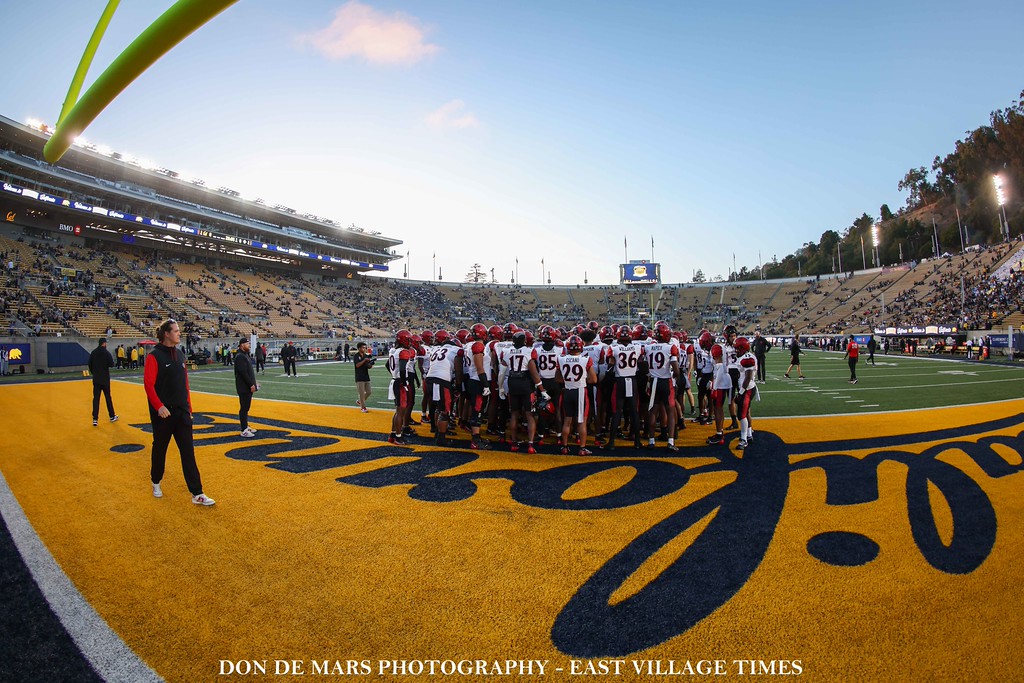
SDSU huddles before its road contest against Cal. (Don De Mars/EVT)
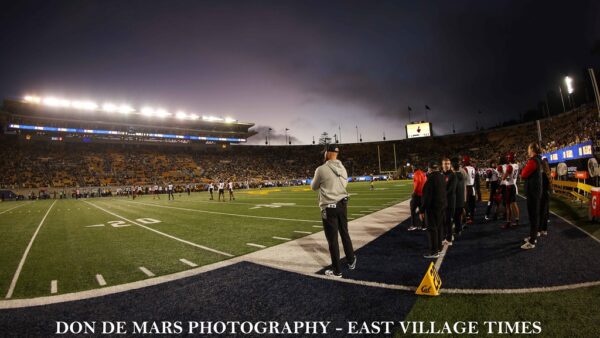
From the moment Sean Lewis was hired last November, worry that SDSU was just a stepping stone for its new head coach abounded.
With a strong foundation of 13 bowl-eligible seasons in 14 years to build upon, fear that Lewis would win quickly and jet to greener pastures with a more lucrative contract is valid. SDSU’s place in college football’s ecosystem makes this outcome a possibility.
Aside from Georgia, Ohio State, Alabama, and a few others, every school is in danger of losing a successful head coach. After a trip to the national championship, Kalen DeBoer left his $4.2 million per year contract with Washington to become the Crimson Tide’s head coach.
Long before the ride on the coaching carousel for Lewis, Central Michigan head coach Jim McElwain was the fast riser in the industry. In 2008, McElwain was hired to be the offensive coordinator at Alabama. That same year, Lewis was the OC at Richards High School in Illinois.
During McElwain’s four seasons in Tuscaloosa under Nick Saban, the Tide won two national titles. He coached running back Mark Ingram during his 2009 Heisman Trophy campaign. Buoyed by that success, Colorado State hired McElwain before the 2012 season.
With the Rams, McElwain won 22 games in three seasons. He earned the 2014 Mountain West Coach of the Year Award after leading CSU to ten wins. Before CSU’s bowl game that season, the University of Florida poached him away.
McElwain went 22-12 with the Gators. He won SEC Coach of the Year in 2015. Midway through the 2017 season, Florida fired him. 2019 was his first with the Chippewas.
McElwain became just the fourth coach ever to be named the coach of the year in three different conferences when the MAC selected him for the award during his inaugural season with Central Michigan—that year ended with a 48-11 loss to the Aztecs in the New Mexico Bowl.
A leading offensive mind in college football, McElwain is a valid comparison with Lewis. Since he left campus a decade ago, the Rams have yet to match the success they had under McElwain.
Wherever their career paths lead, McElwain and Lewis’ current teams square off on Saturday. Below are ten things to watch in that matchup.
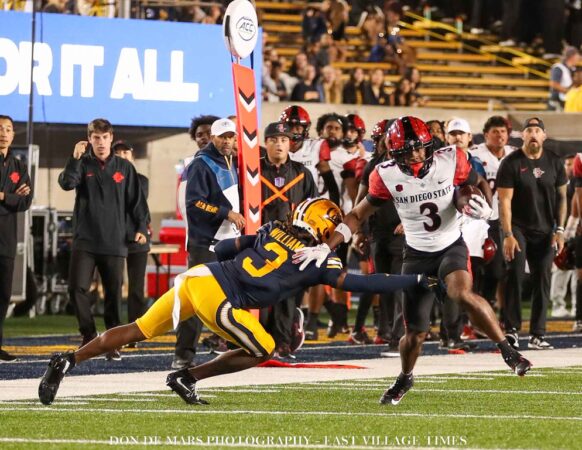
10. Time to play the understudies
Self-scouting is one of the chief opportunities afforded by a bye week. Without an opponent to prepare, Lewis and his staff can evaluate players and tendencies. Among the unanswered questions over the season’s first three weeks is who the playmakers are on the team.
Trey White, Chris Johnson, Tano Letuli, and Eric Butler have looked the part on defense. The other starters have yet to distinguish themselves. Could more reserves see the field against Central Michigan?
Deshawn McCuin and Sam Benjamin, in particular, have yet to live up to their potential. McCuin has zero tackles for loss among his ten stops. Benjamin has no stats in 2024. Tupu Alualu had a strong game against Cal and could push for more time. Joshua Hunter’s consistent tenacity at safety could help the defense overcome some late-game lapses.
Offensively, Ja’Shaun Poke has not rewarded Lewis for his central place in the offense. Jordan Napier has scored the team’s only touchdowns against FBS competition. His 40-yard catch and run for a touchdown against Cal was special. The Aztecs need to find a way to get him the ball. Mekhi Shaw and Jerry McClure also provide intriguing options at wide receiver.
SDSU’s running game has been stagnant since the opener. Unlike Texas A&M-Commerce, Oregon State and Cal chose to defend the Aztecs with a pair of high safeties and six in the box. This prevented Marquez Cooper from breaking off any long runs. Expect Central Michigan to copy the Beavers and Bears.
One way to counter this tactic is for the quarterback to get involved in the run game. Danny O’Neil’s leg injury might prevent him from impacting the game on the ground, leaving Cooper without a numbers advantage in the run game. Could the deciding factor in the QB competition be Javance Tupou’ata-Johnson’s ability to unlock Cooper?
Ball State effectively utilized Kiael Kelly, a former quarterback turned defensive back, in read-option packages. He had a long of 24 yards against Central Michigan. QB runs should also be effective for the Aztecs, provided they have someone capable of executing it.
In addition to the reserves on the depth chart, could SDSU’s fourth game be when off-the-radar Aztecs see the field? Warmups will reveal who is part of the travel squad. EVT will be in Mount Pleasant, Michigan, covering this aspect of the game.

9. Roster Surprises
Among the more interesting developments of NIL and the unlimited transfers in college football is how they have incorporated existing rules and given them new meaning. The saga that unraveled at UNLV this week is a perfect example.
The Rebel’s starting QB, Matthew Sluka, announced his transfer after leading the team to a 3-0 start. He contends that UNLV’s NIL collective failed to meet its verbal obligations to him. The university claims Sluka’s agents asked for more money.
Whatever side one takes in the drama playing out in Sin City, it illustrates the power built into the relatively new NCAA rule to allow athletes to retain redshirt seasons even if they play four games. The legislation intended to encourage coaches to play freshmen because they would not have to worry about losing a year. In today’s world, it has turned into a negotiating tool.
Reports citing sources—likely from inside UNLV’s football program—allege other programs reached out to Sluka, offering money. Even if the quarterback’s version is the truth, it would be naive to think tampering did not take place. It is commonplace in the sport.
Multiple Aztecs that will be suited up on Saturday had lucrative offers to play elsewhere. They turned them down to stay in San Diego. The NCAA guidelines reward underhanded schemes every offseason until an athlete’s fifth game of the season. This is hardly a surprise for an entity built to favor a handful of schools over the rest.
Roster changes for the Aztecs are a storyline to follow. Two members of SDSU’s two-deep, Baylin Brooks and Bennett Walker, exercised their right to preserve their redshirts and transfer from the program. Will any of their former teammates join them? Are any Aztecs playing their final game for the Red and Black?
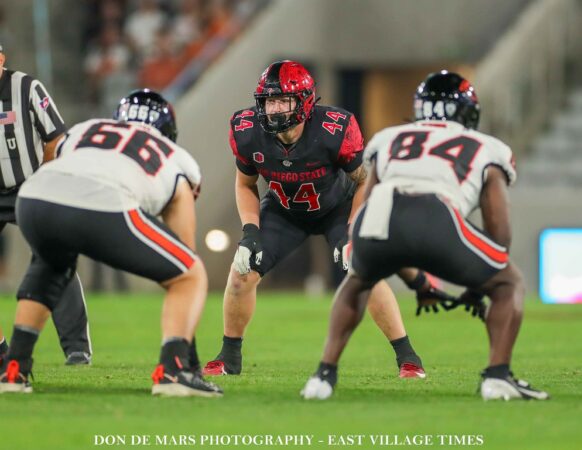
8. Beating the blitz and running back checkdowns
Due to how Oregon State runs the football, SDSU did not blitz often against the Beavers. That changed against Cal. The Aztecs effectively rushed the quarterback with linebackers and defensive backs. SDSU’s six sacks against the Bears was higher than 35 teams have on the season.
Ball State only recorded one sack against Central Michigan but pressured the QB effectively when they brought extra defenders. CMU quarterback Joe Labas was good at delivering passes with defenders around him. It will be interesting to see how the Aztecs attack him.
CMU only has 19 third-down conversions on the season in 50 attempts. SDSU only has 13 in 43 tries. Whichever offense can consistently create 3rd and makeable will have an advantage. SDSU might want to sit back and attempt to rush Labas with four while dropping seven to defend the pass.
Labas’ most consistent pass against Ball State went to running backs out of the backfield. If SDSU believes they can bottle up the backs, they might be content to keep the action in front of them.
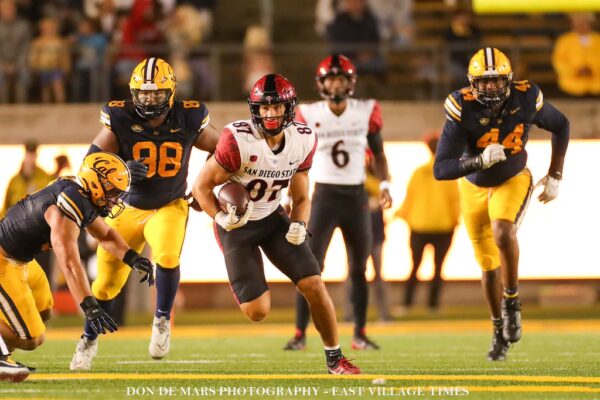
7. Replicating Ball State’s Tanner Koziol
Ball State tight end Tanner Koziol had a career day against Central Michigan. The 6-foot-7, 237-pound tight end came into the season an established player but not a superstar. He earned third-team preseason All-MAC accolades from various publications.
Last Saturday, he set high marks with nine receptions and 112 yards. It was the first time he reached the century plateau in three seasons with the Cardinals. The Chippewas had no answer for him. This week, SDSU will determine if they can approximate Koziol’s production. CMU will be working to sure up this weak spot.
Ball State utilized Koziol on screens, over the middle, and isolated out wide as a receiver. Whatever the Cardinals did, Central Michigan could not cover him.
Jude Wolfe and Michael Harrison, SDSU’s two primary receiving tight ends, have a combined 12 receptions for 89 yards on the season. That limited production suggests the Aztecs might not be unable to replicate Ball State, but they should try.
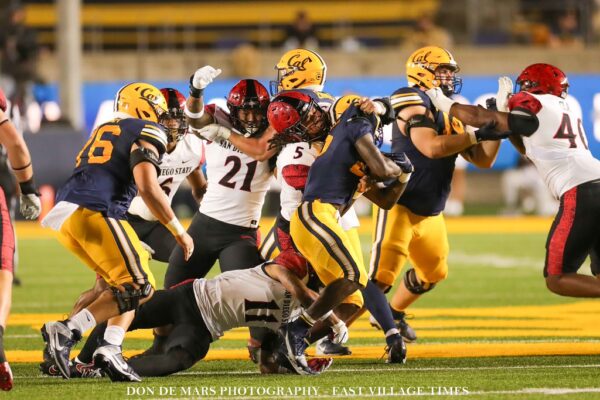
6. First downs on the ground
SDSU’s pass defense has allowed only 19 first downs through the air. That total ranks tied for No. 6 in the nation with Alabama. Even when adjusted for the number of games, the Aztecs’ 6.3 passing first downs allowed per game average is still No. 19 in the nation.
The rushing defense is a different story. The Aztecs’ opponents have moved the chains 32 times on the ground. Only 39 teams in the country have given up more. Thirty-three of those teams have played four or five games this season.
The fears about Lewis’ SDSU tenure exists between two poles. One side, described above, would see Lewis become McElwain at Colorado State and leave The Mesa after finding early success. The other pole compares Lewis to the Aztecs’ last offensive-minded head coach, Chuck Long.
During Long’s three years in San Diego, his defenses gave up 10.4, 14, and 13.1 rushing first downs per game. SDSU has given an average of 10.7 this season. 2008 was the last time the Aztecs’ defense had a double-digit average in this category.
As SDSU moves into the second quarter of its schedule, addressing this area is a must. The 4-2-5’s strength is the wave of EDGEs it can throw at offenses. This strength will be mitigated if SDSU continues allowing first downs on the ground.
Central Michigan has not been a run-first offense this season. Forty percent of its season’s running yards came last week against Ball State. Forcing the Chippewas to convert on third down via the pass is a key to victory.
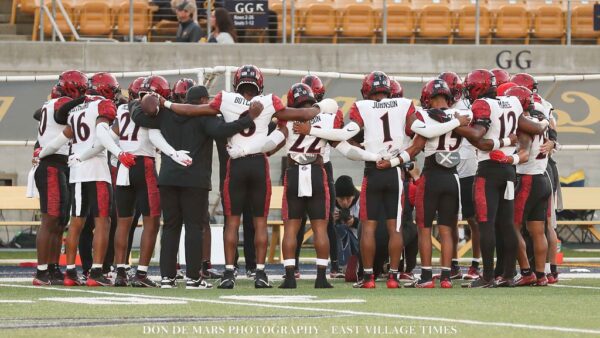
5. Home is where the heart is
SDSU hopes to even McElwain’s record with Central Michigan. CMU’s head coach has a 31-30 mark with the Chippewas. His home/road splits are pronounced.
On the road, McElwain has only 11 wins. In Mount Pleasant, he is 20-8. Both of CMU’s wins this year have come at home. Neither of their road losses were highly competitive. Last week, they had multiple opportunities to quit but competed with pride.
Ball State jumped out to a 10-0 lead and blocked a punt on CMU’s first possession of the second quarter. Coming off two lopsided defeats, the Chippewas could have folded. Instead, their defense held the Cardinals to a turnover on downs.
In the fourth, Ball State took a 34-30 lead with 56 seconds left. CMU’s offense responded with a 75-yard, game-winning touchdown drive that took just 37 seconds.
Central Michigan is a slight favorite. The Aztecs, coming off a bye, will need to beat CMU, where they play their best.
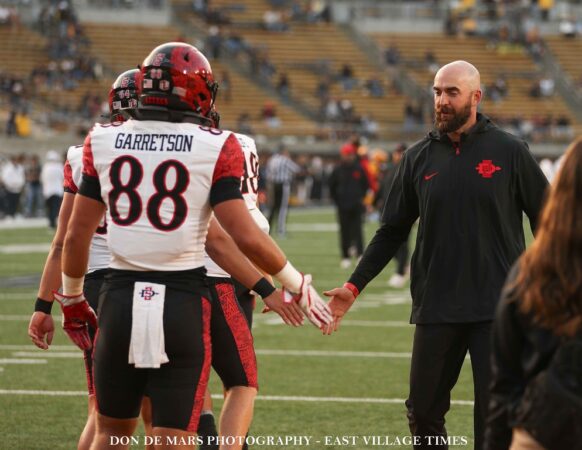
4. Sputtering offenses led by offensive head coaches
Lewis and McElwain have previously faced each other. On November 10, 2021, Central Michigan defeated Kent State 54-30. CMU and KSU combined for 156 plays, 961 yards, and 12 touchdowns that day.
Nothing that has transpired this season suggests Saturday will match those fireworks. Central Michigan is deceptively ranked no. 47 in the nation in total offense. That number was buoyed by contests against Central Connecticut State (491 yards) and Ball State (527 yards). Last week, they got an uncharacteristic 335 on the ground. They have yet to record a 200-yard passing game against an FBS opponent.
SDSU has been even worse. To date, Aztec Fast has just been a clever name. Its no. 117 rank in the nation is an appropriate, summative stat.
History suggests Lewis and McElwain’s offense will not sputter for long. Ball State is one of the worst defenses in the FBS, and CMU’s late-game success could ignite its offense. San Diego State is coming off an opportunity to return to the basics during the bye, and expectations are that the offense should improve.
Could Saturday be the shootout Aztec Nation has been clamoring for since Lewis’ hire?

3. Starting Fast
Every team has issues, and the Aztecs, at 1-2, have a fair share. Among them is poor start to games. They have scored six first-half points and no touchdowns. Despite these offensive challenges, SDSU’s defense has kept them in every contest until the fourth quarter.
Coming off a pair of defeats and with two weeks to prepare for Central Michigan, a fast start would do wonders for SDSU’s chances. The Chippewas have had their own struggles early in contests.
CMU has trailed at the end of the first quarter in every contest against FBS opponents. Their only touchdowns in the opening fourth of a game came against Central Connecticut State, who CMU defeated by 56.
Mother Nature could help with getting out of the gates quickly. Last week, Central Michigan lost three first-quarter kickoffs in the sun. Ball State kicked into the north end of Kelly/Shorts Stadium.
Saturday’s contest starts two hours later than it did last week, so the sun might not be as important of an issue. Still, any advantage should be utilized. Paying attention to which direction the teams start is something to watch.
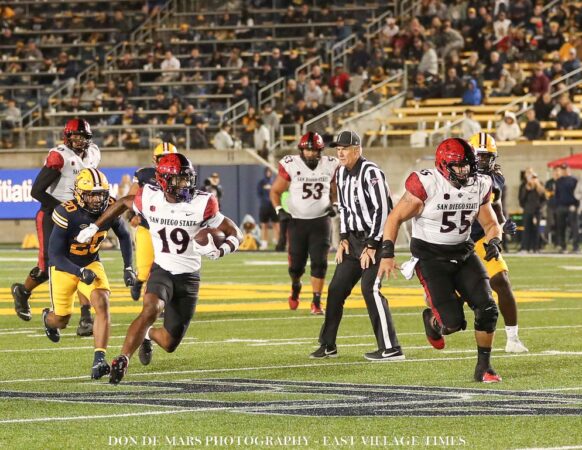
2. Big plays for the win
SDSU and Central Michigan have had trouble stringing together long touchdown drives. Explosive plays have accounted for much of the offenses’ production.
The Aztecs’ first three touchdowns of the year came or were set up by big plays. Marquez Cooper had a 47-yard run, Louis Brown IV caught a 44-yard pass, and Jordan Napier turned a short pass into a 29-yard gain.
Oregon State and Cal’s ability to prevent the Aztecs from gaining chunk plays led to a seven-quarter touchdown drought. Napier’s 40-yard screen pass and run for a score against the Bears broke the dubious streak.
The Chippewas hung 37 on Ball State. It took big plays to accomplish that. Six players had single-play gains over 20 yards, including Nahree Biggins’ 76-yard run and B.J. Harris’ 71-yard scamper. A fair summary of Central Michigan’s win over the Cardinals would be that they had little going aside from a handful of plays.
The defense that forces the opposition to string together long scoring drives will have an advantage in the matchup. If both offenses get big plays, it could turn into a track meet.
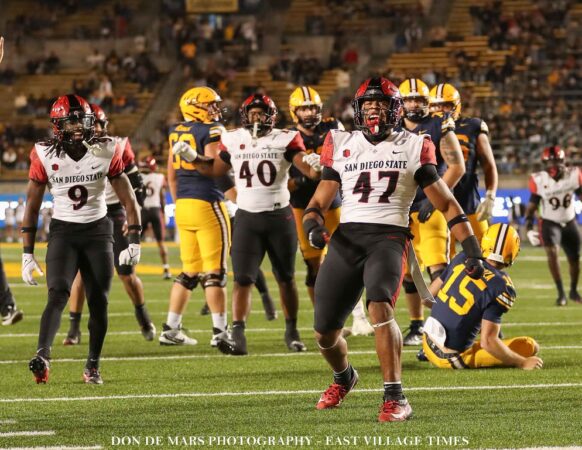
1. Stopping the Run on the EDGE
Every defense has inflection points, key areas that determine success. In the 3-3-5, much hinged on the field warrior safety. If that hybrid athlete excelled in slot coverage, SDSU’s defense shined. The 4-2-5 is built around the skill of its EDGE players.
The defense requires these athletes to rush the passer and be stout against the run. They have succeeded in the first part of their job but failed in the second. Cal’s top two backs averaged 9.9 and 9.7 yards per carry in SDSU’s last game. Their longest runs attacked the EDGE players.
Defensive coordinator Eric Schmidt placed Trey White in critical spots. When the team captain made plays, the Aztecs forced punts. When he did not, the Bears capitalized.
Setting up its first score, Cal used two tight ends on either end of the line. With two receivers to the field side, SDSU’s linebackers shaded that way. White was the boundary EDGE with a corner and safety the only defenders behind him. At the snap, the tight end walled off White, and two Cal offensive linemen pulled outside to pave the way for the running back’s huge run.
The Bears’ second score came after another explosive run with White again at the point of attack. Schmidt called a stunt between White and Tupu Alualu. As Alualu wheeled to the edge, White crashed inside. Cal called an inside run, and a pulling tight end pancaked White.
The second example could be put on Schmidt’s lap more than White’s, but it describes the types of plays opposing offenses are finding success with. Central Michigan had trouble running the ball all year until this past week against Ball State. They broke off runs similar to what Cal did to the Aztecs.
The Chippewas are a pass-first team. Their explosive ground gains came when Ball State was looking for the pass. As they found success with the run, CMU called more of them. These more straightforward attempts did not work. And McElwain went back to the types that did.
Schematic adjustments will be interesting to watch. White and the other EDGEs have only played three games in the system, and their growth in the position will also be a storyline to follow.
My earliest sport’s memory involve tailgating at the Murph, running down the circular exit ramps, and seeing the Padres, Chargers and Aztecs play. As a second generation Aztec, I am passionate about all things SDSU. Other interests include raising my four children, being a great husband and teaching high school.
Unfortunately, our Aztecs present as a company of B Squad mercenaries lacking discipline. The development of an identity demands a focus, that so far, this troop of itinerant warriors has lacked. Can this leadership instill cohesion or will they abandon the Mesa?